A Glorious New Exodus
The New Covenant Deliverance in Jesus Christ
by John Dunn
The Exodus deliverance of the nation Israel was the archetypical salvation event of the entire Old Testament period. Everything which preceded and every event which followed after revolved around Israel’s Exodus redemption from Egypt by God’s outstretched arm. The Exodus event became the climactic theme of Israel’s cult of worship, Psalms of praise, feast celebrations, prophetic revelation, and future hope. Through the Exodus event God entered into a conditional legal covenant with national Israel at Sinai, based on outward obedience to external law codes. It was there that He gave them his Law and espoused them as His own peculiar covenant people. This covenant (Old Covenant) was not saving, but acted as a “ministry of death” and a “ministry of condemnation” against the backdrop of sin (II Cor. 3:7-9). The Law’s function was to teach Israel God’s righteous character and show them that this true “image of God” (Gen. 1:26-27) was missing in the corrupted human nature, ever since the fall of mankind into sin. To this end, the Law’s design was not to restore the lost “image of God” in men but rather to kill and bring wrath upon sinful human rebellion against God (Rom. 4:15, 7:5). To be sure, the Law was spiritual (Rom. 7:14), but it was not of faith (Gal. 3:12). Therefore, it had no power of itself to produce “the righteousness of faith” (Rom. 4:13-16). “For the Law made nothing perfect” (Heb. 7:19). Just the opposite, the Law serves only to inflame sin in the natural man who walks after the flesh and not after the Spirit (Rom. 7:8-9). The Law was only an outward and external rule of moral conduct written on lifeless tables of stone (II Cor. 3:7). It was merely “a shadow of the things to come, but the substance belongs to Christ” (Col. 2: 17).
The Law was added because of transgressions and served merely as an external “guardian and manager” (Gal. 3:23-24, 4:1-5) to keep adolescent Israel governed and subservient under a typological pattern of righteousness until the true spiritual righteousness (Holy Spirit of Christ) was given (Rom. 7:6, 8:1-2). Under the Old Covenant, salvation from the Law’s curse was typified through the shedding of the blood of animals (Heb. 9:13). This salvation was only external and served only the purification of the flesh (Heb. 9:13). Salvation did not and could not come by keeping the Law (Rom. 10:1-4, Gal. 3:11). Nor could it come merely through bloody animal sacrifice (Heb. 9:7-10); “for it is impossible for the blood of bulls and goats to take away sins” (Heb. 10:4). Salvation under the Old Covenant came only by faith in the gracious promises of a coming Redeemer – as in the faith of Abraham (Rom. 4:3), whereby he “rejoiced” to see Christ’s day “and was glad” (John 8:56). [See “Covenants of Promise” below] To this end, the Old Covenant was only a temporary external covenant and “guardian” (II Cor. 3:7, 11, 13) “until Christ came” (Gal. 3:24) in order that justification might be by faith, apart from the Law (Rom. 3:21, 28). It was a covenant of shadows and types which pointed to the coming Christ (Col. 2:17). The shadows and types were only elemental fleshly representatives of the true spiritual realities which were to be revealed. As such, they served as an outward religion of regulations – “Do not handle, Do not taste, Do not touch” (Col. 2: 20-21). This means that national Israel was also temporary and external in nature, serving as a type of the true spiritual Israel to come. “Not all who are descended from Israel belong to Israel . . . It is not the children of the flesh who are counted as offspring, but the children of promise are counted as offspring”, the true spiritual offspring of Israel (Rom. 9:3-8, Gal. 4:28). Therefore, to view the Exodus exclusively as an Old Testament event, confined solely to Hebrew history, is to miss the glory of the entire revelation of Scripture.
The wonder of the Exodus event is that it gloriously foreshadowed and typified the new Exodus event of the New Covenant in Christ Jesus. The Exodus event of old has been divinely cast as the definitive paradigm of redemptive history. The apostolic Gospels and epistles are nothing less than the full expounding of the New Exodus spiritual realities. A right view of Christ’s redemptive work can only be viewed through the lens of the New Exodus paradigm. A careful study of New Testament language usage will reveal how the apostolic authors import many significant words, texts, and themes from the Old Testament into their writings. For example, the apostle Paul uses explicit Exodus language in his epistles (bondage, slave, Passover, liberty, sacrifice, firstborn, firstfruits, circumcision, mediator of the covenant, Great High Priest, Mt. Sinai vs. Mt. Zion). This clearly indicates that the apostolic writers understood the New Covenant Christ-event as a completely new spiritual Exodus, the grand fulfillment of all the Old Covenant types.
Through the new Exodus-event of Jesus, God has entered into an unconditional grace-covenant (the New Covenant) with His Church, the true Israel of God (Gal. 6:16), and has espoused Her as his own peculiar covenant people (II Cor. 6:16, Heb. 8:10). The Church is now dead to the Old Covenant Law through the body of Christ and has been joined to Him, so that She would “serve in the new way of the Spirit and not in the old way of the written code” (Rom. 7:1-6). He has accomplished this by putting away Her sins (Heb. 9:26) and abolishing the law of commandments expressed in ordinances (Eph. 2:15) by nailing the legal demands to his cross (Col. 2:14), through the shedding of Christ’s blood, offered once for all (Heb. 10:10). The former commandments have been set aside because of their weakness and uselessness (Heb. 7:18-19). The Church is now the place where God “makes his dwelling among them and walks among them;” He is now “their God and they are His people” (Ex. 29:45, Lev. 29:45, II Cor. 6:16). This is the New Covenant which God promised would come (Jer. 31:31, I Cor. 11:25, II Cor. 3:6, Heb. 8:5-13, 9:15, 10:15-17, 12:18-24). This covenant is entirely saving and gracious. It is no longer external and ineffectual as the Old Covenant was. Rather, the New Covenant exists solely as a “ministry of the Spirit” and a “ministry of righteousness” (II Cor. 3:8-9). Its design is to save and give life internally (Rom. 5:17-18). Its righteousness is imputed and applied to the heart by faith, without the use of the external Law (Rom. 3:21-22, 7:6). This internal New Covenant righteousness is accomplished by the indwelling presence and power of the Holy Spirit now written upon the tables of the heart (II Cor. 3:3, Heb. 8:10, 10:16). The Holy Spirit is the new “Law” of the New Covenant (Rom. 8:1-2). This new spiritual law is not merely a “Christian” reformulation or restatement of the 10 Commandments. Rather, it is the active and powerful inward restoration of the “image of God” in the hearts of fallen man, by the Holy Spirit. “And we all, with unveiled face, beholding the glory of the Lord, are being transformed into the same image from one degree of glory to another. For this comes from the Lord who is the Spirit” (II Cor. 3:18). Jesus Christ is the very “image of God” into which we are being restored (II Cor. 4:4), as we behold his shining face (II Cor. 4:6). We “have put off the old self with its practices and have put on the new self, which is being renewed in knowledge after the image of its creator” (Col. 3:9-10). Jesus, our new Lawgiver, shines his face toward us from Mt. Zion as Moses did from Sinai (Mat. 17:2, Rev. 1:16). Love is fulfilment of the Law and the chief fruit of the restored image of God’s righteousness in us (Rom. 13:10, Gal.5:14, 22), and not surprisingly so since God himself is love (I John 4:8, 16). Unlike the Old Covenant, which was temporary and passing away (II Cor. 3:7,11,13, Heb. 8:13), the New Covenant is permanent and eternal (II Cor. 3:11, Heb. 13:20). “And the Holy Spirit also bears witness to us; for after saying, This is the covenant that I will make with them after those days, declares the Lord: I will put my laws on their hearts, and write them on their minds, then he adds, I will remember their sins and their lawless deeds no more” (Heb. 10:15-17).
This New Exodus view of redemptive history recognizes that the New Covenant is the spiritual fulfillment of the literal Old Covenant, which stood only as a temporary fleshly type. As such, the spiritual New Covenant is essentially “new” in contradistinction to the Old Covenant order of the flesh which has passed away. “From now on, therefore, we regard no one according to the flesh. Even though we once regarded Christ according to the flesh, we regard him thus no longer. Therefore, if anyone is in Christ, he is a new creation. The old has passed away; behold the new has come” (II Cor. 5:16-17).
This New Exodus understanding is not a formulation of classical Reformed Covenant Theology, with its view that the New Covenant age is merely a newer administration of the continuing and over-arching “covenant of grace,” which Israel was also supposedly under. The theological system of classical Covenant Theology does not recognize the distinctiveness of the New Covenant, and, as a result, insists on a continuing use of the Moral Law (10 Commandments), identifying national Israel as the “Church”, and the covenant inclusion of New Testament infants (through infant baptism). The covenantal distinctions of Reformed Covenant Theology (“covenant of works” and “covenant of grace”) are theological formulations, not Scriptural terms. Nowhere are the terms “covenant of works” or “covenant of grace” ever used, conceptualized, developed, or explained by Scriptural exegesis or inference.
In the same way, the New Exodus understanding is not a formulation of Dispensationalism, with its insistence on 7 distinct “dispensations” or epochs of salvation and its radical separation of Israel and the Church. Again, the concept of distinct “dispensations” is a theological formulation which is nowhere used, conceptualized, developed, or explained by sound Scriptural exegesis or inference. The term “dispensation” is used in the New Testament, but it does not possess the theological value or meaning that Dispensationalism assigns to it. Dispensationalism also fails to recognize the distinctiveness of the New Covenant.
On the other hand, the Scriptures do explicitly use, describe, develop, and distinguish between two primary covenants (Gal. 4:24), specifically the Old Covenant and the New Covenant. These Biblical covenants stand opposed to the theological formulations of both classical Covenant Theology and Dispensational Theology. The New Exodus understanding will show that the literal Old Covenant types have passed away. They are now the “weak and worthless elementary principles of the world” to which we can no longer return (Gal. 4:9). However, this is not to say that the types have passed away leaving an empty void. Rather, the Old types have given way to the glorious New Covenant spiritual realities which they prefigured and pointed toward in a fleshly way. So, as it concerns the 10 Commandments engraved on tablets of stone, the nation Israel, the temple, the Levitical priesthood, the cult of worship, and the bloody sacrificial system, they have all permanently and everlastingly “perished with the using” (Col. 2:22). They were “a shadow of the things to come, but the substance belongs to Christ” (Col. 2:17). This reality can be most clearly seen through the lens of the New Exodus in Christ.
The New Exodus Patterns
The entire historical timeline of Jesus’ life, death, burial, resurrection, and ministry as mediator, prophet, high-priest, and king is a spiritual recapitulation and fulfillment of all the literal Exodus types under Moses. The Exodus event of the Old Covenant gloriously foreshadowed the New Exodus event of the New Covenant. The Gospel story is the New Exodus story. The following points show the identical correlation between the fleshly Old Exodus types and the corresponding spiritual New Exodus fulfilments in Jesus Christ:
- 1. Moses was born into lowly poverty and laid in a basket (Ex. 2:3).
Jesus was born into lowly poverty and laid in a manger (Luke 2:7).
- 2. Moses “fled” to Egypt in a basket to escape death, Pharaoh’s infanticide (Ex. 2:1-10). [Abraham, Isaac, and Jacob also prefigured the Exodus imagery. They each “fled” to Egypt to escape death, famine. They received “gifts” from the kings when they came out.]
Jesus “fled” to Egypt with his parents to escape death, Herod’s infanticide (Mat. 2:13).
- 3. Moses forsook the pleasures of Egypt (Heb. 11:26) and was rejected of his brethren and men (Ex. 16:7-8, Num. 14:36). He spent 40 years in the wilderness where, being called of God, he returned to be Israel’s deliverer and prophet (Acts 7:29-30).
Jesus forsook the pleasures of heaven (II Cor. 8:9) and was rejected of his brethren and men (Isa. 53:3, John 7:1-5). Jesus spent 40 days in the wilderness where, being called of God, he returned to be Israel’s deliverer and prophet (Luke 4:1-21, Rom. 11:26). Christ is our “greater prophet” and mediator than Moses. He has delivered his people from the slavery and bondage of sin (Egypt) through his own blood.
- 4. Moses appeared to Israel, performing miraculous signs and wonders – of affliction and death (Ex. 7:3).
Jesus appeared to Israel, performing miraculous signs and wonders – of healing and life (Acts 2:22).
- 5. Israel killed male Passover lambs , without blemish (Ex. 12:5), which blood the destroying angel passed over (Ex. 12:13).
Jesus is the true Passover Lamb (I Cor. 5:7), like that of a lamb without blemish or spot (I Peter 1:19), whose precious blood the wrath of God passes over (Rom. 5:9).
- 6. Israel’s Passover lamb was slain in the darkness of evening (Ex. 12:6).
Jesus, the true Passover Lamb, was slain in a supernatural darkness which covered the land at his crucifixion (Mat. 27:45).
- 7. The Israelites were commanded to remove the leaven from their houses and eat the Passover with unleavened bread (Ex 12:8-17).
Christians are commanded to remove the “old leaven” of sin from their hearts (I Cor. 5:6-8, Gal. 5:9).
- 8. Under Moses, the Feast of the Passover was inaugurated and observed (Ex. 34:25, Lev. 23:5). It was the Old Covenant meal in which Israel looked for and anticipated her coming Messiah.
Under Jesus, the Feast of the Passover was fulfilled and finalized. At the final Passover meal, Jesus changed the celebration into the New Covenant meal (the Lord’s Supper), saying “this cup that is poured out for you is the New Covenant in my blood” (Luke 22:20), “Do this, as often as you drink it, in remembrance of me” (I Cor. 11:25). In eating the bread and drinking the cup, the Church now anticipates the second coming of Jesus Christ in glory, “proclaiming the Lord’s death until he comes” (I Cor. 11:26).
- 9. The crossbeams of the lintel and doorpost were covered with the blood of the Passover lamb (Ex. 12:7).
The wooden crossbeams of Jesus’ cross were covered with his own blood (Col. 1:20).
10. Through the Passover lamb, the Israelites were released from servile bondage to slavery under Pharaoh (Ex. 12:23-33).
Through Christ the Lamb, the elect are released from servile bondage to sin under the Law (Rom. 7:1-6).
11. At Israel’s Exodus deliverance, God led a host of captives to their destruction in the Red Sea and gave gifts to the Israelites, when they plundered the Egyptians (Ex. 3:22, 12:36).
At the Church’s New Exodus deliverance, Jesus ascended on high and led a host of captives, and gave spiritual gifts to men (Eph. 4:7-8, Col. 2:15, Luke 11:21-22).
12. At Israel’s Exodus, Pharaoh and his army were destroyed (Ex. 15:4,19).
At the Church’s New Exodus, Satan and his army have been disarmed and are awaiting final destruction (Col. 2:15, Heb. 2:14, I John 3:8, John 16:11, Rev. 20:9-10).
13. Israel’s salvation came by the shedding of blood, fire, and water (Passover lamb, the protecting and illumining Pillar of Fire, the path through the Red Sea).
The Church’s salvation came by the shedding of blood, fire, water (Lamb of God, baptism with fire by the Holy Spirit, washing with water by the Word).
14. Egypt’s judgement and destruction came by blood, fire, and water (their own blood by destroying angel, the separating pillar of fire became darkness to them – Ex. 14:19-20, drowning in Red Sea).
The Church’s judgment came by blood, fire, and water. This judgment was poured out upon Jesus Christ in Her place. Jesus was destroyed by the shedding of his own blood (Heb. 9:12-14), the sweet smelling aroma of himself as the whole burnt offering, consumed by the fire of God’s wrath (Heb. 10:6-10), and the water which flowed from his side (John 19:34, I John 5:6).
The World’s final judgment has already begun at The Flood, and will be completed at the Last Day by the bloody destruction of unbelievers (Rev. 14:14-20), and the consuming fire of God’s wrath, being drowned in the “lake of fire” (II Peter 2:5-10, Rev. 20:9).
15. Israel glorified God and sang the song of Moses (Ex. 15:1).
The Church glorifies God and sings the new song of Moses and the Lamb (Rev. 15:3).
16. The Israelites celebrated the Feast of the Firstborn upon their deliverance from Egypt (Ex. 13:2), signifying that Israel, the Lord’s “firstborn son” (Ex. 4:22), had been figuratively raised from the dead when the destroying angel passed over Egypt, killing their firstborn.
The scriptures identify Jesus as the true “Firstborn from the dead” (Col. 1:18), signifying that his resurrection is the fulfilment of the Exodus type, and identifying him as God’s firstborn Son, actually resurrected from the dead.
17. Israel celebrated the Feast of Harvest, in which they brought the firstfruits of their crops into the house of the Lord as an offering for holy service (Ex. 23:16-19).
Christ is the firstfruits of the resurrection from the dead (I Cor. 15:20-23) who has entered the heavenly tabernacle of the Lord (Heb. 9:24) as an offering for holy service (Eph. 5:2, Heb. 9:14). Believers are firstfruits unto God (I Thes. 2:13, Rev. 14:4), bringing spiritual offerings for holy service, as they themselves are the spiritual house of the Lord (I Pet. 2:4-5) and are seated in heavenly places in Christ (Eph. 2:6).
18. The children of Israel passed under the cloud and through the Red Sea and were baptized unto Moses (I Cor. 10:2).
New Covenant believers pass through the death, burial, and resurrection of Christ and are “baptized into Jesus Christ” and “baptized into his death” (Rom. 6:3).
19. Three days before Israel received the Law, Moses ascended Mt. Sinai to mediate before God. Moses was the mediator of the Old Covenant (Heb. 9:19-20) which has now passed away (II Cor. 3:7,11, 13, Heb. 8:13).
Three days before the Church received the Holy Spirit, Jesus ascended into Mt. Zion (Acts 1:9-11) to ever mediate before God (Heb. 9:11-15). Jesus is the mediator of the New Covenant (Heb. 8:6, 9:15, 12:24) which is permanent (II Cor. 3:11).
20. Moses’ experience on Mt. Sinai in the presence of Jehovah caused his face to shine, and the people were afraid to come near to him. (Ex. 34:29-35, II Cor. 3:7, 13)
Jesus’ time on the Mount of Transfiguration caused his face to shine “like the sun” and his clothes to shine. The disciples were initially afraid but were comforted by Jesus. (Mat. 17:1-8). The transfiguration was a ‘sneak-peak’ preview of Jesus’ resurrection glory on Mt. Zion, as new Lawgiver, “the Son of Man coming in his Kingdom” (Mat. 16:28). God now shines in the hearts of believers “to give the light of the knowledge of the glory of God in the face of Jesus Christ” (II Cor. 4:6). [See: “The Transfiguration” below]
21. Before receiving the Law, Israel sanctified and set themselves apart in prayer for 3 days (Exodus 19:10-11).
Before receiving the Holy Spirit, the Church sanctified and set themselves apart in prayer for 3 days (Acts 1:12-13).
22. Fifty days after the Passover was slain Israel received the Law of the covenant on Sinai, engraved on tables of stone in the hand of Moses, the mediator of the Old Covenant (Heb. 8:5-6). “For the law was given through Moses . . . ” (John 1:17).
Fifty days after Christ our Passover was slain, the Church (at Pentecost) received a new Law, the law of the Spirit of life in Christ Jesus (Rom. 8:2) . . . written not on tablets of stone but on the tablets of human hearts (II Cor. 3:3), in the hand of Jesus, the mediator of the New Covenant (Heb. 12:24). New Covenant believers now “serve in the new way of the Spirit and not in the old way of the written code” (Rom. 7:6). This is the very Spirit that the Prophets said would be poured out (Ezek. 39:29, Joel 2:28-29), the “promised Holy Spirit” (Acts 2:33, Gal. 3:14, Eph. 1:13). “ . . . grace and truth came through Jesus Christ” (John 1:17).
Indeed the apostle Paul affirms, “if you are led by the Spirit you are not under the Law (Gal. 5:18) and therefore exhorts believers to be “filled with the Spirit” (Eph. 5:18) and to “walk in the Spirit” (Gal. 5:16), “live in the Spirit” (Gal. 5: 25), “pray in the Spirit” (Eph. 6:18), “worship in the Spirit” (Phil. 3:3), and “love in the Spirit” (Col. 1:8). If it is true that the “fruit of the Spirit is love” (Gal. 5:22), and “love is the fulfilling of the law” (Rom. 13:8-10, Gal. 5:14), and “God’s love is shed abroad in our hearts through the Holy Spirit who has been given to us” (Rom. 5:5), then surely the Holy Spirit is, without question, the new ‘Law’ of the New Exodus in Christ, written upon our hearts through faith . . . “faith works through love” (Gal. 5:6). To this end, believers “are not under law but under grace” (Rom. 6:15).
[See: “The Law and the Christian” below]
23. On the day that Israel received the Law, there was thunder, trumpet blasts, and the terrifying voice of God, accompanied with lightning, fire, and smoke resting on Mt. Sinai.
On the day that the Church received the Holy Spirit at Pentecost, there was a mighty rushing wind and cloven tongues of fire resting upon the saints, accompanied by the joyous voice of God speaking through the Spirit-filled saints, “as the Spirit gave them utterance” proclaiming the “wonderful works of God” (Acts 2:1-11).
Peter signifies that this event is the New Exodus when he quotes from the Prophet Joel (Joel 2:28-32). Notice Joel’s Exodus-event imagery – Signs, Wonders, Water, Blood, Fire, and Cloud:
“And in the last days it shall be, God declares, that I will pour out my Spirit (An image of water, as in Israel’s baptism through the water of the cloud and Red Sea – see I Cor. 10:2) on all flesh, and your sons and your daughters shall prophesy, and your young men shall see visions, and your old men shall dream dreams; even on my male servants and female servants in those days I will pour out my Spirit, and they shall prophesy. And I will show wonders in the heavens above and signs (Moses and Jesus did signs and wonders) on the earth below, blood (Passover Lamb), and fire (Pillar of Fire – Ex. 13:21), and vapor of smoke (Pillar of Cloud – Ex. 13:21); the sun shall be turned to darkness and the moon to blood, before the day of the Lord comes, the great and magnificent day. And it shall come to pass that everyone who calls upon the name of the Lord shall be saved” (Acts 2:17-21).
It is significant to note that this Exodus theme of blood, fire and water reoccurs in I John 5:6-8: “This is he who came by water and blood–Jesus Christ; not by the water only but by the water and the blood. And the Spirit (Spirit = Fire – see Matt. 3:11, Luke 3:16) is the one who testifies, because the Spirit is the truth. For there are three that testify: the Spirit and the water and the blood; and these three agree.”
24. Israel came to Mt. Sinai, “to what may be touched, a blazing fire and darkness and gloom and a tempest and the sound of a trumpet and a voice whose words made the hearers beg that no further messages be spoken to them. For they could not endure the order that was given, “If even a beast touches the mountain, it shall be stoned.” Indeed, so terrifying was the sight that Moses said, “I tremble with fear” (Heb. 12:18-21).
The Church comes to Mt. Zion, “But you have come to Mount Zion and to the city of the living God, the heavenly Jerusalem, and to innumerable angels in festal gathering, and to the assembly of the firstborn who are enrolled in heaven, and to God, the judge of all, and to the spirits of the righteous made perfect, and to Jesus, the mediator of a new covenant, and to the sprinkled blood that speaks a better word than the blood of Abel” (Heb.12:22-24).
25. At Sinai, Israel received the Old Covenant. Israel was given a conditional covenant promise based on their own legal obedience to the external Law code (Ex. 19:5-6).
The Church having come to Mount Zion, not Mt. Sinai (Heb. 12:18-24), has received the New Covenant. The Church has received the very same covenant promise that Israel was given, only now it is given unconditionally through grace (I Peter 2:9-10) and is rooted in Christ’s legal obedience to the demands of the Old Covenant in Her place (Rom. 8:3-4). Christ has thus fulfilled the Law and the Prophets and brought the Old Covenant to an end (Mat. 5:17, Rom. 10:4).
26. Those who set aside the Law of Moses died without mercy on the evidence of two or three witnesses (Heb. 10:28).
Those who spurn the Son of God, profane the blood of the New Covenant, and outrage the Sprit of grace (the new “Law”) are deserving of far worse punishment – a fearful expectation of judgment, and a fury of fire that will consume the adversaries (Heb. 10:26-31).
27. After the giving of the Law at Mt. Sinai about 3000 Israelites died in one day (Ex. 32:28).
After the giving of the Holy Spirit from Mt. Zion at Pentecost about 3000 souls were saved in one day (Acts 2:41).
28. Moses prophesied that a greater Prophet than himself would appear, “The LORD your God will raise up for you a prophet like me from among you, from your brothers–it is to him you shall listen” (Deut. 18:15).
Jesus is the greater Prophet than Moses, “We have found him of whom Moses in the Law and also the prophets wrote, Jesus of Nazareth, the son of Joseph” (John 1:45, Acts 3:22-26).
29. Israel was given the tabernacle to establish God’s dwelling place among them (Ex. 25:9). Moses interceded in the tabernacle at the mercy seat (Num. 7:89).
The resurrected Jesus has entered the true tabernacle in heaven to intercede for his Church (Heb. 8:1-5, 9:11-12). Christ “tabernacles” in his people through the Holy Spirit (I Cor. 3:16) and “dwells in them and walks in them” (II Cor. 6:16).
30. The Levitical priests partook of the sacrifices offered on the altar (Lev. 10:12).
Christians are spiritual priests (I Peter 2:5,9, Rev. 1:6, 5:10) and partake of the one Sacrifice (Jesus Christ) offered on the true altar (Heb. 13:10-13).
31. After 3 days in the wilderness, Moses turned the “bitter water” into “sweet water” (Ex. 15:22-25).
On the third day of Jesus’ public ministry he attended a wedding at Cana of Galilee. Jesus turned the (bitter water) dirty purification water into (sweet water) wine (John 2:1-9).
32. Israel was judged by serpents and was commanded to look upon the brass serpent and live (Num. 21: 4-9).
Christ became a curse, being hung on a tree (Gal. 3:13), and was lifted up as the serpent was in the wilderness, so that all who look upon him receive eternal life (John 3:14-15).
33. Israel made warfare against her physical enemies (Num 21:32-35).
The Church makes warfare against her spiritual enemies (Luke 10:17-20, Eph. 6:12).
34. Israel received a daily portion of manna from heaven every day (Ex. 16:4).
The Church is to pray “give us each day our daily bread” (Luke 11:3).
35. The Law-based Old Covenant was a “ministry of death” and a “ministry of condemnation” which was being brought to and end (II Cor. 3:7, 9, 11, 13, Heb. 8:13).
The grace-based New Covenant is a “ministry of the Spirit” and a “ministry of righteousness” which far exceeds the Old in glory and is permanent (II Cor. 3:7-11). For the letter kills, but the Spirit gives life (II Cor. 3:6, Heb. 8:13).
36. The external Law was a ceremonial and legal function of the Levitical priesthood (Deut. 17:18).
The new internal law of the Spirit (Rom. 7:6, 8:2) is a spiritual function of Christ’s new Melchizedek priesthood (Heb. 7:11-12).
37. Israel built an earthly temple after entering the Promised Land (I Kings 8:17-20).
God is presently constructing a permanent spiritual temple with “living stones” (believers), to be completed at the Last Day (I Pet. 2:5, Rev. 21).
38. Israel sojourned in the wilderness, awaiting the earthly Promised Land.
The Church sojourns on the earth, awaiting a new heavens and new earth, “looking forward to the city that has foundations, whose designer and builder is God” (Heb. 11:10-16), and yet She is already seated with Christ in heaven (Eph. 2:6).
39. God supernaturally caused Israel’s outward clothing not wear out during their 40 year sojourn in the wilderness (Deut. 8:4, 29:5).
God supernaturally causes believers’ “inner self” to be renewed day by day (II Cor. 4:16) during their sojourn in their temporary “tent”, as they long for their “heavenly dwelling”, “a building from God, a house not made with hands, eternal in the heavens” (II Cor. 5:1-3).
40. Israel belonged to a literal earthly Jerusalem, enslaved under legal bondage to the Law and sin (Gal 4:3-5, 25).
The Church belongs to the true heavenly Jerusalem, for “the Jerusalem above is free, and she is our mother” (Gal. 4:26, Heb. 12:22, Rev. 21:10). This Jerusalem is under grace, not under law (Rom. 6:14-15). She is no longer enslaved to sin (Rom. 6:17), and is set free from the Law (Rom. 7:1-6, Gal. 5:1).
41. Israel received conditional “If, then” blessings for legal obedience to the Old Covenant (Deuteronomy 28:1-14).
Jesus gave his disciples unconditional “blessed are” New Covenant blessings (Mat. 5:1-11).
42. Israel received conditional “If, then” curses for legal disobedience to the Old Covenant (Deut. 28: 15-68). An entire generation of Israel was judged and destroyed after the Exodus during 40 years of wilderness wandering, because of faithless disobedience (Heb. 3:16-19).
Jesus gave his unbelieving people unconditional prophetic curses regarding the soon destruction of Jerusalem, using the language of Deuteronomy 28:52 (Luke 19:43-44, 21:2024, Mat. 24:1-2). Jerusalem was destroyed in AD 70, approximately 40 years after the New Exodus. Historian Josephus describes the starvation and cannibalism caused by devastating siege of Jerusalem by Titus exactly as Deuteronomy 28:52-57 foretells.
43. Israel’s circumcision was made in the flesh (Gen. 17:24) of the physical children of the Old Covenant. Newborn male infants received an external seal of circumcision of their foreskins on the eighth day (Lev. 12:2-3). This circumcision was merely an outward fleshly rite. It could not save or impart grace. It was merely an external representation (sign) of the “seal of righteousness” which comes by faith (Rom. 4:11), the “righteousness of faith” (Rom. 4:13).
The Church, the true Israel of God (Gal. 6:16), received a “circumcision of the heart made without hands” (Col. 2:11). The Church’s infants are those who are spiritually “born again” of the Holy Spirit, by grace, through personal faith (John 3:3-8, I Peter 1:3). These newborn “infants in Christ” (I Cor. 3:1) receive the true inward seal of circumcision (Eph. 1:13, 4:30) of their hearts by the Holy Spirit (Rom. 2:29, Col. 2:11, Phil. 3:3). The Holy Spirit is the true seal of inward righteousness (Rom. 8:4). This circumcision is internal, spiritual, life-giving, and completely saving.
44. Joshua (meaning: Jehovah is salvation) led Israel over the Jordan into the Promised Land and slew the nations and their kings (Josh. 10-12).
Jesus (meaning: Jehovah is salvation) leads the true Israel over the Jordan of death into Heaven and gives life to the nations, and the kings of the earth bring their glory into it (Rev. 21:23-25).
Through the New Exodus paradigm we see that the Church is the true Israel of God (Gal. 6:16, Rom. 2:28-29, 9:6-8, Rev. 7), the true circumcision (Phil. 3:3) and the end-time eschatological Temple filled with the Holy Spirit of Christ (I Cor. 3:16-17). True infants of the New Covenant are those “infants in Christ” (I Cor. 3:1) who have been born into the covenant by being spiritually “born again” by grace, through personal faith (John 3:3-6, I Pet. 1:3), by “the promised Holy Spirit” (Eph. 1:13),. They receive the seal of circumcision (Eph. 1:13, 4:30) upon their hearts by the Holy Spirit (Rom. 2:29, Col. 2:11). The Holy Spirit is the law of the New Covenant, “the law of the Spirit of life in Christ Jesus” (Rom. 8:2), written “not on tablets of stone but on the tablets of human hearts” (II Cor. 3:3). Believers in Christ are now a royal kingly priesthood unto God, bringing sacrifices of praise and righteousness (I Pet. 2:5-9) and serving in the “new way of the Spirit and not in the old way of the written code” (Rom. 7:6). They are seated with Christ in heaven, sharing his Kingly rule and reign on the earth (Eph.2:6, Col. 3:3, Rev. 5:10). Jesus is our Mediator of the New Covenant (Heb. 9:15, 12:24). It is a “better covenant” than Moses’ covenant (Heb. 7:22), “since it is enacted on better promises” (Heb. 8:6). Indeed, our exalted “Jesus has been counted worthy of more glory than Moses” (Heb. 3:3). He is our Prophet, greater than Moses (Acts 3:22). He is our Great High Priest, after the order of Melchizedek (Heb. 6:20). He is our eternal King, the true Son of David (Luke 1:32-33). Jesus himself is the true living water (John 4:10) from the true spiritual Rock (I Cor. 10:4). He is the true heavenly bread/manna (John 6:33) and the true Sabbath rest of the New Covenant (Mat. 11:29030, Col. 2:16-17, Heb. 4:8-10). In place of the Passover meal, the Church of Jesus Christ now celebrates the New Covenant in his blood. Behold, old things have passed away, and all things have become gloriously new!
All of the Biblical patterns fit together perfectly. All of the prophets give witness, and all the apostles agree together with one unified voice. The Gospel message which Jesus and the apostles proclaimed often began with the retelling of Moses and the Prophets (Acts 28:23), thereby demonstrating that they were expounding the Good News of the Kingdom through the lens of the Exodus event. It is the very message that made the two apostles’ hearts burn within them as the resurrected Jesus, the unknown traveller, expounded the Word to them, “beginning with Moses,” on the Emmaus road (Luke 24:24-32). It was the bold declaration of Peter after Pentecost (Acts 3:22). It was the sermon which the blessed martyr Stephen gave witness to with his own blood (Acts 7). It was the rich New Covenant language and theology of the apostle Paul and the other New Testament writers. With this entire weight of Biblical evidence set forth, it is clear that the New Exodus paradigm is what the Scripture is testifying about itself concerning the New Covenant salvation in Jesus Christ. It is my prayer that these truths may abound in the midst of today’s Church, re-igniting a passion for the study of God’s Word and causing the grace, knowledge, and love of Jesus Christ to abound with “all joy and peace in believing, so that by the power of the Holy Spirit we may abound in hope” (Rom. 15:13)
Covenants of Promise: The Faith of the OT Saints
The Scriptures speak of the “covenants of promise” in addition to the Old and New Covenant:
“Remember that you were at that time separated from Christ, alienated from the commonwealth of Israel and strangers to the covenants of promise, having no hope and without God in the world” (Eph. 2:12). Under the Old Covenant the Gentiles were outside of (alienated from) the fleshly commonwealth of Israel and her covenants of promise. But, praise be to God we have been brought into the full spiritual inheritance and particiapation of them, “But now in Christ Jesus you who once were far off have been brought near by the blood of Christ” (Eph. 2:13).
The “covenants of promise” were specific covenants that God made at certain times throughout redemptive history, which contained a promise of future blessing. Each of these covenants had two fulfillments: a literal fulfillment (the temporary Old Covenant type), which would eventually pass away, and a true spiritual fulfillment (the permanent New Covenant antitype) concerning Christ. For the sake of brevity only two covenants of promise will be briefly examined:
- 1. Abrahamic Covenant Promises
- Abraham would bear a Seed (Gen. 17:7) = type (Gen. 17:9) / antitype (Gal. 3:16)
- Abraham would become a great nation (Gen 12:2) = type (II Sam. 7:23) / antitype (Rev. 5:9)
- Abraham would inherit a land (Gen. 12:7) = type (Jos. 22:4) / antitype (Rom. 4:13, II Pet. 3:13)
Abraham’s faith was not fixed on the literal earthly fulfilments of the promises that he received. Rather, he saw, by faith, the true spiritual realities which they represented:
Heb. 11:10 For he was looking forward to the city that has foundations, whose designer and builder is God.
Heb. 11:13 These all died in faith, not having received the things promised, but having seen them and greeted them from afar, and having acknowledged that they were strangers and exiles on the earth.
Heb. 11:16 But as it is, they desire a better country, that is, a heavenly one. Therefore God is not ashamed to be called their God, for he has prepared for them a city.
- 2. Davidic Covenant Promise
- David’s sons would reign forever ( II Chr. 13:5) = type (I Kings 1:39) / antitype (Mat. 1:1, Rom. 1:1-3)
David saw by faith that his Son was not a merely a fleshly descendant, but the Lord himself:
Acts 2:29-31 Brothers, I may say to you with confidence about the patriarch David that he both died and was buried, and his tomb is with us to this day. Being therefore a prophet, and knowing that God had sworn with an oath to him that he would set one of his descendants on his throne, he foresaw and spoke about the resurrection of the Christ, that he was not abandoned to Hades, nor did his flesh see corruption.
In the same way all the saints saw and believed, by faith, the true spiritual realities of Christ which the prophetic and covenant promises foreshadowed. Adam named his wife “Eve”, meaning ‘giver of life’, in response to God’s promise that the Seed of the woman would destroy the seed of the serpent (Gen. 3:20). Enoch believed in the final resurrection and judgment (Jude 1:14-15). Job believed in a future Redeemer and the resurrection of his body (Job 19:25-27). Noah was a preacher of righteousness (II Peter 2:5) and was an heir of the “righteousness which is by faith” (Heb. 11:7). Isaac was a child of promise and was born after the Spirit, just as we are (Gal. 4:28-29, Rom. (9:6-8). The Prophets “inquired carefully” about the sufferings of Christ which they prophesied by the “Spirit of Christ in them” (I Peter 1:10-12).
The Transfiguration
Moses appeared in glory with Elijah at the transfiguration and spoke with Jesus about his “departure” (meaning: exodus) that he was about to accomplish in Jerusalem (Luke 9:31). This event with Elijah and Moses communicates powerful spiritual parallels. Both Elijah and Moses were passing the prophetic ‘mantel’ of their respective ministries over to Jesus, so to speak. Jesus is the new Moses, the new Exodus Deliverer, the mediator of the New Covenant (Heb. 9:15, 12:24) whose face shone “like the sun” (Mat. 17:2, Rev. 1:16) at the giving of the new Law (Holy Spirit) from Mt. Zion. Indeed, Jesus explains that the prophecy concerning Elijah’s appearing (Mal. 4:5) is fulfilled in John the Baptist (Mat. 17:10-13). However, Jesus also takes upon himself the mantel of Elijah as the new prophet of fire, who calls down fire on His enemies at the Last Day (II Peter 3:12, Rev. 20:9) as Elijah did (II Kings 1:10). It also shows that the complete judgement of the world has been accomplished through blood, fire, and water, all the elements of the Exodus judgement against Egypt (firstborn of Egypt slain, separation by the pillar of fire which became darkness to them, drowning in the Red Sea). The judgement of the world (spiritual Egypt) has already begun at The Flood, and will be completed at the Last Day by the bloody destruction of unbelievers (Rev. 14:14-20), and the consuming “lake of fire” of God’s wrath (II Peter 2:5-10, Rev. 20:9). All of this imagery shows that Jesus is truly fulfilling the Law and Prophets. Jesus’ transfiguration was a ‘sneak-peak’ glimpse of His resurrection glory as the “Son of Man coming in His Kingdom” (Mat. 16:28). So, indeed it was an image of Jesus as the new Lawgiver, with his shining face after his ascension to the heavenly Mt. Zion (Heb. 12:18-22), in the same way that Moses’ face shone when he descended from Mt. Sinai (Ex 34:29-30). This new Lawgiver uses no veil to conceal his glory like Moses did (II Cor. 3:16-18). His people are not afraid but are “beholding the glory of the Lord, and being transformed into the same image from one degree of glory to another” (II Cor. 3:18), as they behold his glorious face by faith (II Cor.4:6). They are being restored into the “image of God” which they lost at the fall, the very image of Jesus Christ (II Cor. 4:4). Jesus is truly the New Covenant fulfillment of all the Old Covenant types and promises. It is interesting to note that the imagery of Elijah and Moses, the “two witnesses”, are described in Revelation 11. Since Jesus fulfills the prophetic ministry of both prophets, the passage is therefore describing the ministry of Jesus’ everlasting Gospel going forth in the earth through his suffering and persecuted Body, the Church.
The Law and the Christian
There is therefore now no (legal) condemnation to those who are in Christ Jesus (Rom. 8:1). Instead of terror and dread, the Holy Spirit of Christ, who is the new “law” of the New Covenant, produces “righteousness, peace, and joy in the Holy Spirit (Rom. 14:17). Law terrors are completely abolished for those who are in Christ. Granted, our sin grieves the Holy Spirit (Eph. 4:30) and, consequently, our consciences are injured when we sin. Yet this Godly sorrow is entirely the work of the Holy Spirit and is much different than fleshly, self-centred, legal terror brought about by the external Law. The Holy Spirit of Christ is the sole means of our sanctification (I Cor. 6:11, II Thes. 2:13, I Peter 1:2). The Holy Spirit is the means whereby sin is mortified in our lives, not the Mosaic Law; “for if you live according to the flesh you will die, but if by the Spirit you put to death the deeds of the body, you will live (Rom. 8:13). But I say, walk by the Spirit, and you will not gratify the desires of the flesh (Gal. 5:16). And those who belong to Christ Jesus have crucified the flesh with its passions and desires. If we live by the Spirit, let us also walk by the Spirit (Gal. 5:24-25).
Nowhere in the New Testament record are there examples of the Good News being preached with the Law preceding it in order to “prepare” hearts. Just the opposite . . . the Good News goes forth freely with exceeding great joy, uninhibited, unfettered, and unaccompanied! The Pentecost sermon of Acts 2 describes the Holy Spirit as the means whereby sinners are “cut to the heart” with conviction for sin (Acts 2:37).
Furthermore, the Apostle Paul never rebukes the erring Corinthians or Galatians with a healthy dose of the Law. The Mosaic Law is never expounded in an “experiential” manner in the New Testament to produce sorrow or repentance. Rather, Paul points the erring Galatian church back to the Holy Spirit (Gal. 3:3), in opposition to their walking in the flesh. Sadly, many churches today are seated under the shadow of Sinai, under bondage to fear (Rom. 8:15) and not under the full liberty of free grace (Rom. 6:14, Gal. 5:1).
The New Testament is abundantly clear that the Gospel is GOOD NEWS of joy and assurance to all who believe it:
“May the God of hope fill you with all joy and peace in believing, so that by the power of the Holy Spirit you may abound in hope” (Rom. 15:13).
“And you became imitators of us and of the Lord, for you received the word in much affliction, with the joy of the Holy Spirit“ (I Thes. 1:6).
“Philip went down to the city of Samaria and proclaimed to them the Christ . . . So there was much joy in that city” (Acts 8:5-8).
“And when they came up out of the water, the Spirit of the Lord carried Philip away, and the eunuch saw him no more, and went on his way rejoicing“ (Acts 8:39).
“And when the Gentiles heard this, they began rejoicing and glorifying the word of the Lord, and as many as were appointed to eternal life believed” (Acts 13:48).
“But they shook off the dust from their feet against them and went to Iconium. And the disciples were filled with joy and with the Holy Spirit“ (Acts 13:51-52).
“Let us draw near with a true heart in full assurance of faith, with our hearts sprinkled clean from an evil conscience and our bodies washed with pure water” (Heb. 10:22).
While it may immediately appear that this New Exodus view espouses “anti-nomianism,” it assuredly does not. Rather than doing away with the Moral Law it recognizes that the Old Covenant type (Mosaic Law), as written on tables of stone, has given way to the New Covenant spiritual reality, the very Holy Spirit of Christ, written on the tables of our hearts. This new Law of the Spirit is the means by which we are being transformed into the glorious image of Jesus Christ, from glory to glory, as we behold His face in the Word, by faith. In this way, the Moral Law is no longer an external force which acts upon us from the outside. Now we learn Christ (Eph. 4:20), the very image of the invisible God (Col. 1:15), who writes Himself upon our hearts by His Holy Spirit. The Law of God is now spiritual and glorious.
Therefore, to transgress this new Law is to do “despite to the Spirit of grace” (Heb. 10:29), “grieve” the Spirit (Eph. 4:30), and, most seriously, commit blasphemy against the Holy Ghost (Mark 3:29, Luke 12:10).
In this way, the Moral Law of God is fulfilled spiritually, being effectually and irresistibly applied to our hearts – no longer the curse that it once was to those who heard it and trembled under the Old Covenant. We now come to Mt. Zion with joy and gladness and “to innumerable angels in festal gathering” (Heb. 12:22-24).
Furthermore, this New Exodus understanding of the Holy Spirit does not abrogate or diminish the absolute necessity for the written Word of God in the Christian’s life. The written moral propositions and ethics of Scripture are indispensable for the Christian. The Christian faith is a body of propositional knowledge that must be learned, studied, and applied, by faith alone, through grace alone. The Scriptures make this abundantly clear. The Holy Spirit works in, with, and through the written and preached Word to make it effectual in those he calls and ordains to eternal life.
Therefore, it would be heterodoxy to say that all we need now is the Spirit with no other ethical or propositional written Truth required. This would be pure existential mysticism, which would result in moral relativism.
The understanding that the Holy Spirit is the new law given from Zion, vs. the Law given from Sinai, means, most simply, that God’s righteous moral character (the original sinless “image” into which we were first created) is now a Divine Person who works this righteousness effectually and powerfully upon the tables of our hearts, as opposed to external rules written on lifeless tables of stone.
In this New Covenant age, the Law itself IS Christ, the Holy Spirit of Christ (Rom. 8:2, 9). He works His glorious transformative Law work in our hearts, by faith, as we behold His glory in the written propositions of Scripture alone. Jesus taught that true law keeping is a matter of the heart, as in adultery (Mat. 5:28). Paul taught the same in I Corinthians 13 where he expounds the “better way” of love. Love is the fulfillment of all the Law, love toward God and love toward neighbour (Mat. 22:36-40, Rom. 13:8-10, Col. 3:14, Gal. 5:14, James 2:8). Therefore, Love equals true Law fulfillment. And true regenerate Christian love of this calibre is wholly a work and fruit of the Holy Spirit (Gal. 5:22), against such things there is no Old Covenant Law (of threats and terror). This new law is the person of the Holy Spirit. This new law is Christ Himself within us (Col. 1:27), for God is Love (I John 4:16). Therefore, Christians are to be true law keepers, not by merely keeping an external list of rules ever so strictly, but by being filled with the Holy Spirit of Christ and walking in divine Love. This is the essence of I Corinthians 13 – it is possible to do, and sacrifice, and labour, and work, and strive ever so religiously and piously (like the Pharisees) – yet without divinely wrought Love, the true work of the Spirit of Christ in the heart, it is nothing.
In this way, New Covenant believers are under a new pedagogue for righteousness. Not an external list of commandments, which were only a shadow of the true, but a new spiritual heart of loving obedience to the Word of Christ through the Holy Spirit of Christ poured out upon His people.
The issue may be pled that Christians are still sinners and, as such, still require the Law to make them see their sin drive them back to Christ. It is a given that Christians still sin and wrestle against the flesh, but Paul never pointed his erring recipients back to Moses for sanctification under the terrors of the Law. Rather he pointed them to Christ and the Holy Spirit (Gal. 3:2-4). We are to wrestle against the flesh by the mortifying and sanctifying power of the Spirit. Paul continually differentiated between walking in the flesh and walking in the Spirit. A concordance search of all the verses that contain both “flesh” and “Spirit” will show this distinction.
The classical Reformed view understands that the Law’s function is to lead people to Christ (justification) and back to Christ for good works (sanctification). It is to make them see their need of salvation at all times. This is based on Galatians 3:22-24 and I Tim. 1:8-10.
While I can agree with the first part of that idea (that the Law imprisons everything under sin, until Christ comes, so that we may be justified by faith), I do not agree with the latter for these reasons:
”But now that faith has come, we are no longer under a guardian, for in Christ Jesus you are all sons of God, through faith” (Gal. 3:25-26).
”Now we know that the law is good, if one uses it lawfully, understanding this, that the law is not laid down for the just but for the lawless and disobedient, for the ungodly and sinners, for the unholy and profane, for those who strike their fathers and mothers, for murderers, the sexually immoral, men who practice homosexuality, enslavers, liars, perjurers, and whatever else is contrary to sound doctrine, in accordance with the gospel of the glory of the blessed God with which I have been entrusted” (I Tim. 1:8-11).
Once we are in Christ and sealed with the Spirit, the Law and its curse is completely abrogated. It ceases to be that old external guardian that condemns us and produces death. It is not laid down for the just. There is therefore now no condemnation to those who are in Christ Jesus (Rom. 8:1). We are now married to another, even Christ (Rom. 7:1-6). The Law no longer enslaves us under the dominion of sin and death. Rather, the New Covenant “law” (Holy Spirit) becomes our internal guardian, working in us eternal life, by the effectual working of the Word. This new “law” produces in us all joy and peace in believing (Rom. 15:13). ”For you did not receive the spirit of slavery to fall back into fear, but you have received the Spirit of adoption as sons, by whom we cry, “Abba! Father!” (Rom. 8:15).
To this end, we should never cease praying that God would rend the heavens and pour out His glorious and powerful Holy Spirit upon us in mighty ways! O how the Church in our day so desperately needs this. O that we would truly be filled and enflamed with the Spirit of the risen and exalted Christ.
The Old Covenant Prophets Foretell of a
New Exodus / New Covenant Salvation:
- A new Moses would come. Deut. 18:15 = Acts 3:22
- A son born, who is God, who is the new divine David, with an everlasting kingdom. Isa. 9:6-7
- A new Exodus deliverance for a new people. Isa. 11:11-16, 43:13-21
- A new deliverance from hard bondage. Isa. 14:3
- A new suffering servant. Isa. 53
- A new deliverer/liberator. Isa. 61
- A new song of praise. Isa. 42:10 = Rev. 15:3
- A new mountain. Isa. 2:1-3 = Heb. 12:22
- A new Law-giver for the nations. Isa. 42:1-6
- A new Israel. Isa. 60 = Gal. 6:16
- A new Jerusalem. Isa. 62
- A new Mount (Zion) and new Jerusalem. Jer. 3:14-18
- A new Covenant – with a new law written on the heart. Jer. 31:31-40, Jer. 32:40 = II Cor. 3:3-9, Heb. 8:7-13, 10:16, 12:24 (new law covenant).
- A new David, a new Law-giver, a new priesthood, an everlasting covenant. Jer. 33:14-26
- A new Israel with no iniquity – fully pardoned. Jer. 50:20
- A new covenant of peace, with a new David. Eze. 34:22-25
- A new David, a new covenant of peace, a new obedience, a new tabernacle. Eze. 37:24-28 = II Cor. 6:16
- A new heart, a new law obedience. Eze. 36:26-27
- A new heart, a new spirit, a new law obedience. Eze. 11:19-20
- A new temple. A new priesthood. Eze. 40 to 48 = I Cor.3:16-17, I Cor. 6:19, II Cor. 6:16
- A new indwelling of God. Zech. 2:10-13
- A new era for Israel – righteousness and peace, deliverance from captivity. Zech. 3:9-20
- A divine house of David. Zech. 12:8-10
- A new Spirit to be poured out. Isa. 44:3, Eze. 39:29, Joel 2:28-31 = Acts 2:16-19
- A new era for Israel. Joel 3
- A new covenant betrothal. Hos. 2:18-23
- A new tabernacle of David. Amos 9:11 = Acts 15:14-17
- A new Elijah. Mal. 4:5-6 = Mat. 11:12-14
- A new PASSOVER LAMB! John 1:29, 36
“The primary failure of reformed Evangelicalism is that we have not focused on the texts of Scripture; we have focused on the texts of the confessions. Being reformed is not being committed to the confessions, it is being committed to the convictions of the reformers, that of on-going Scriptural reform.”
– Dr. Tom Holland, Wales Evangelical School of Theology –


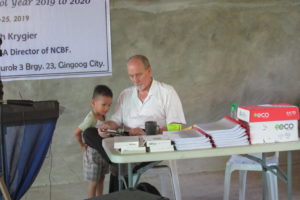
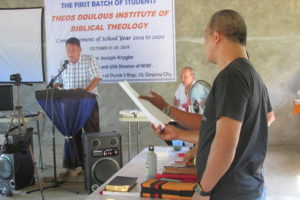
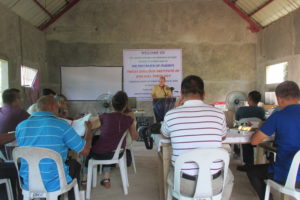
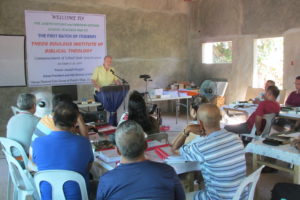
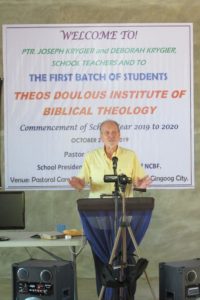
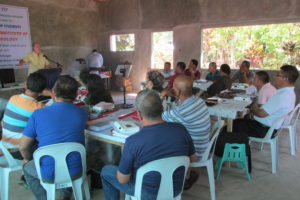




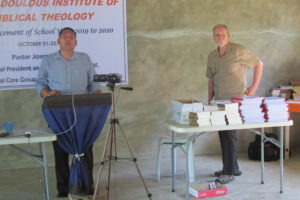

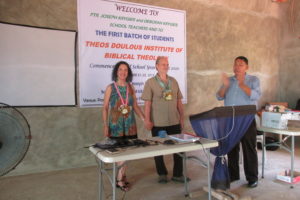
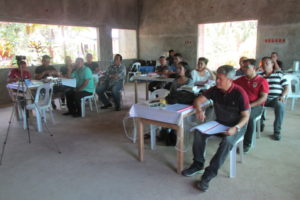

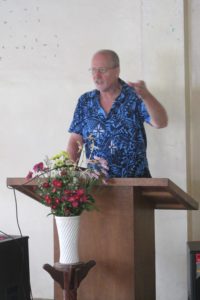














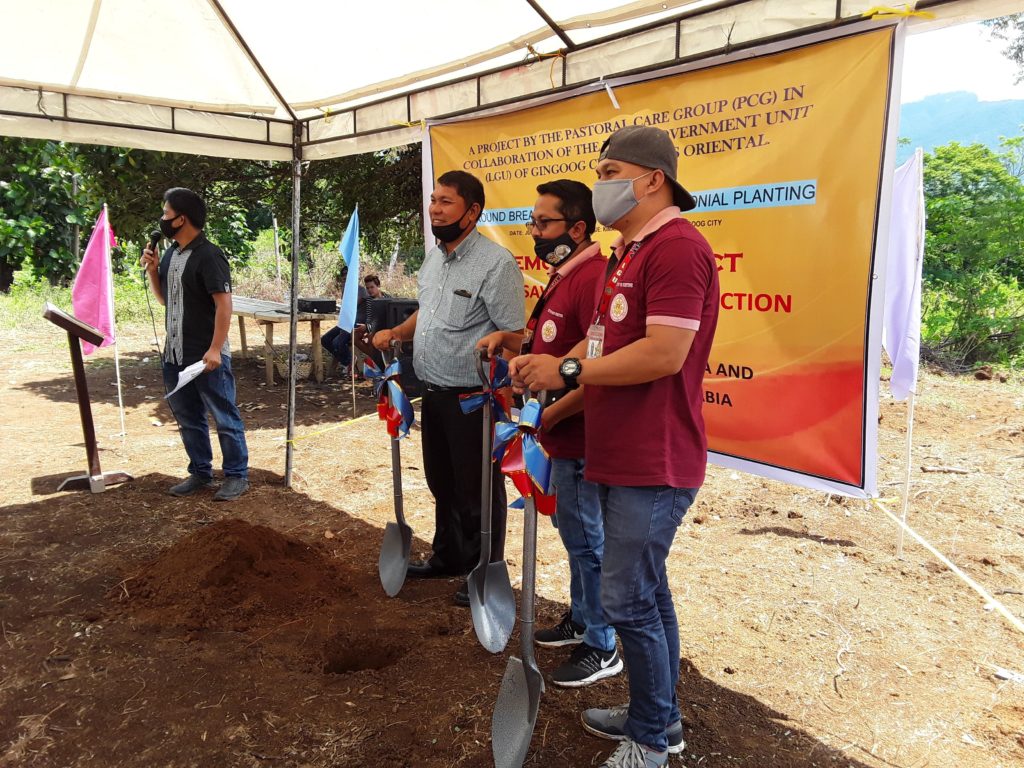
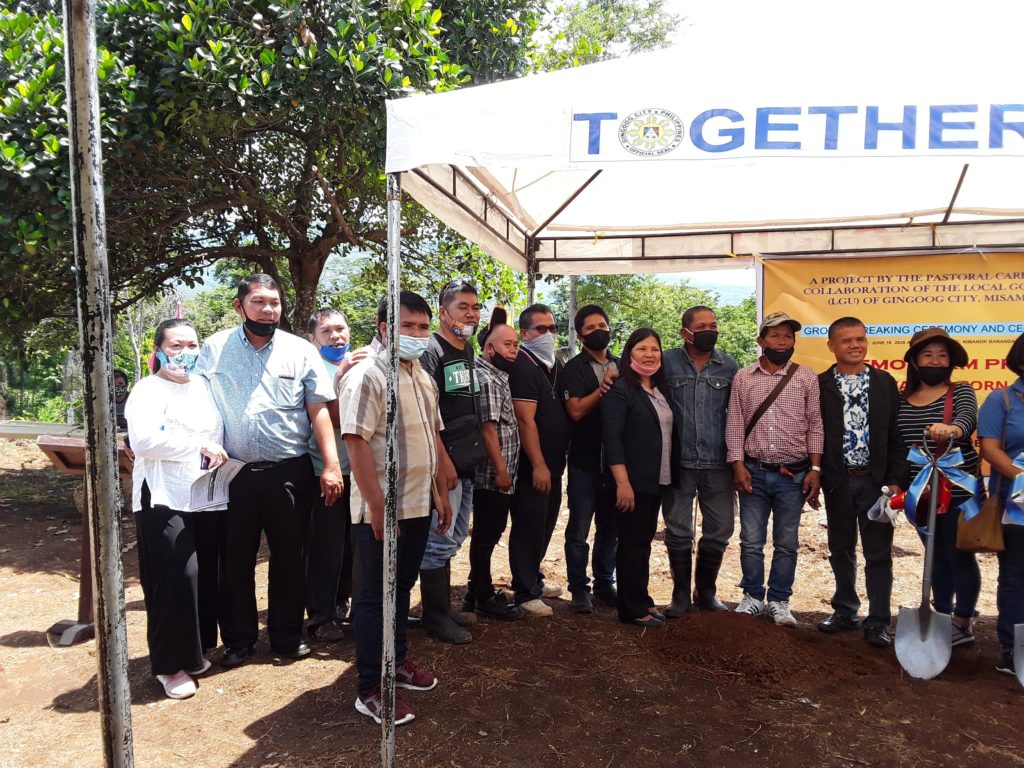


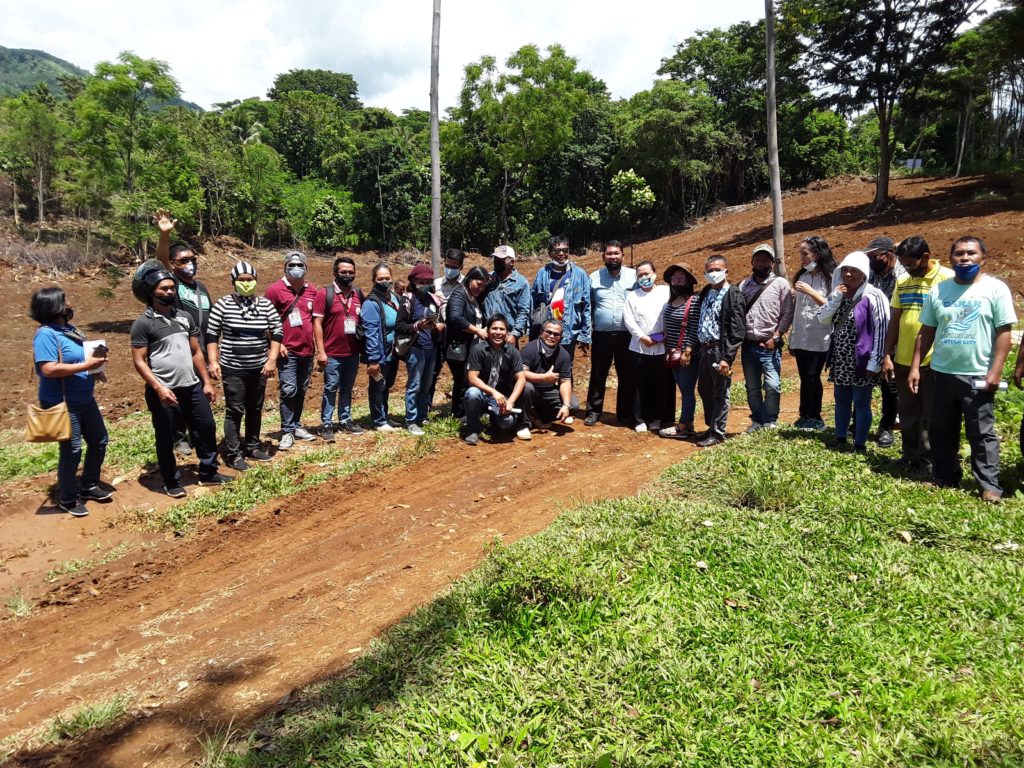
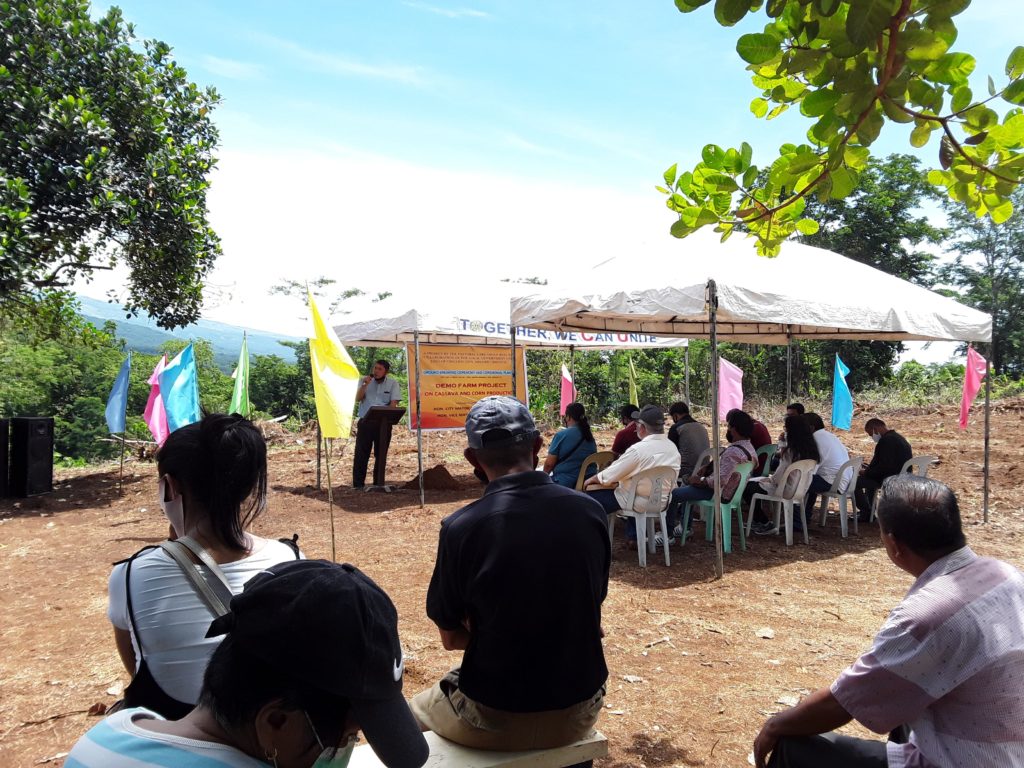


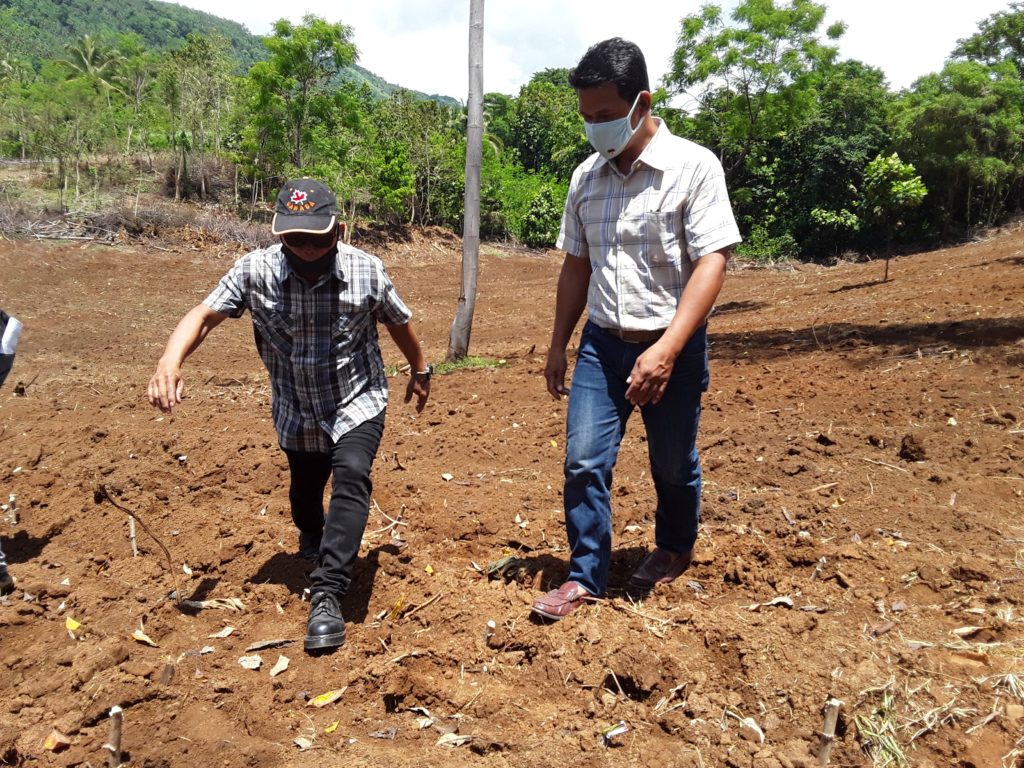









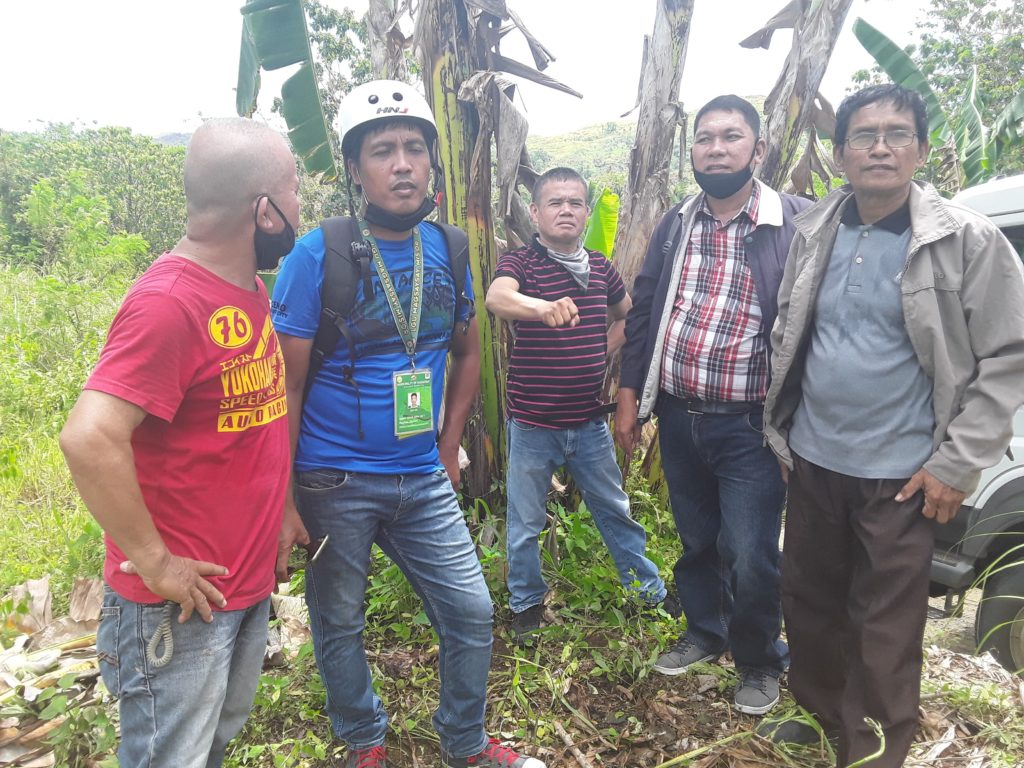
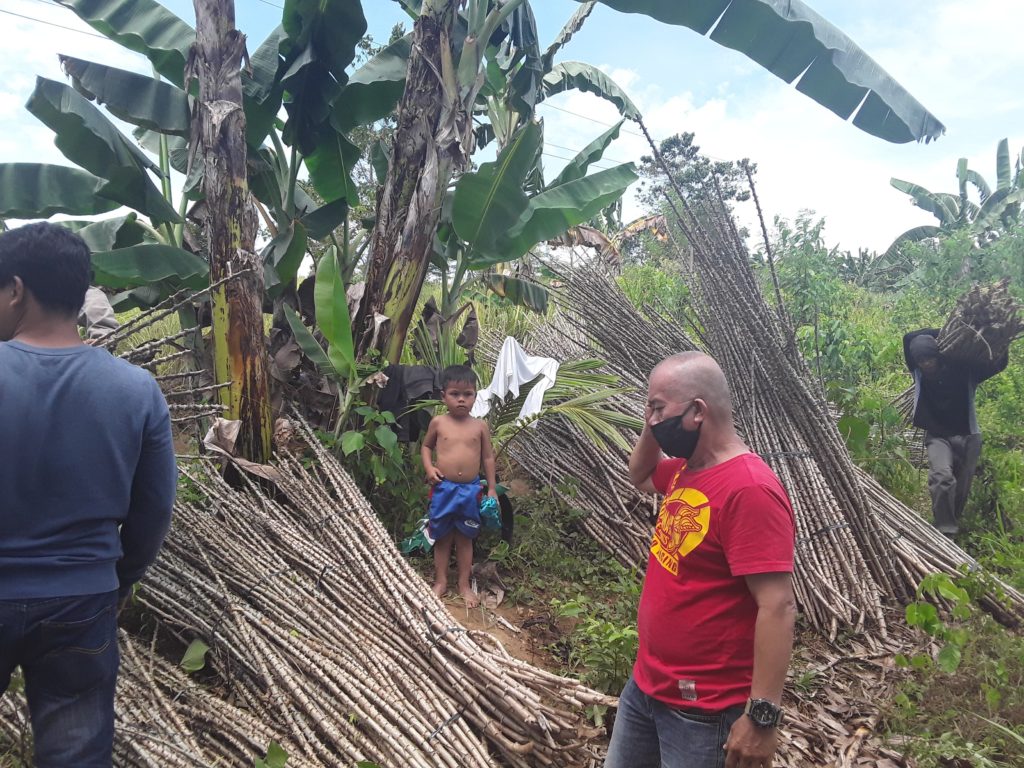










 Dr. Wright has an
Dr. Wright has an 
